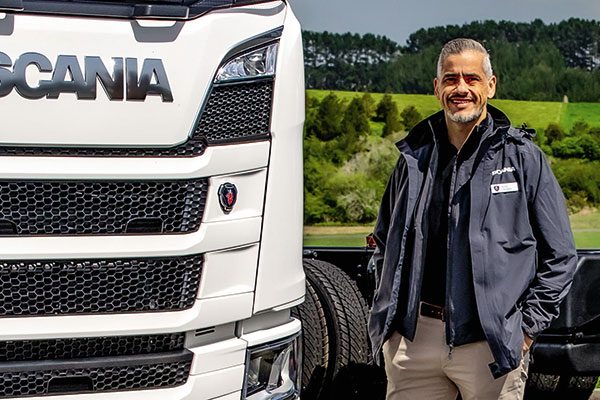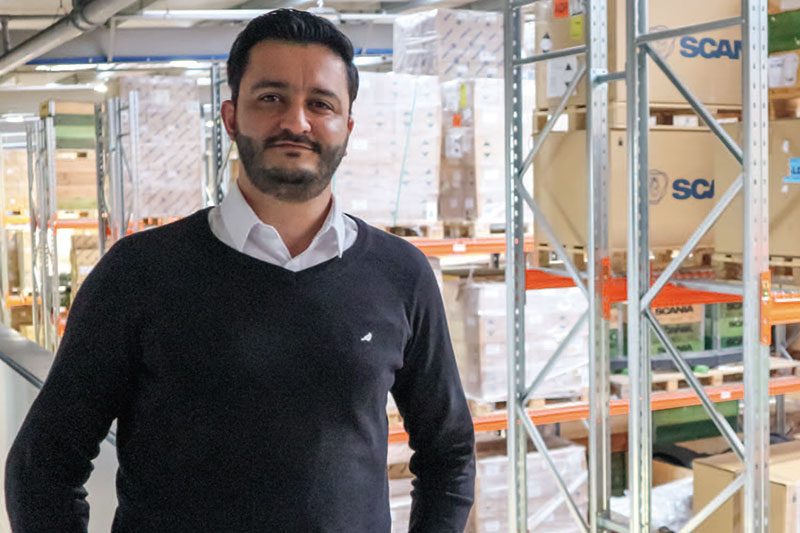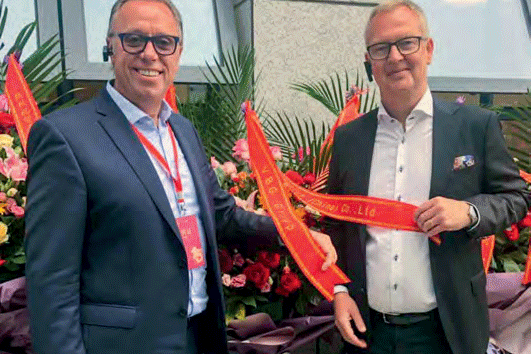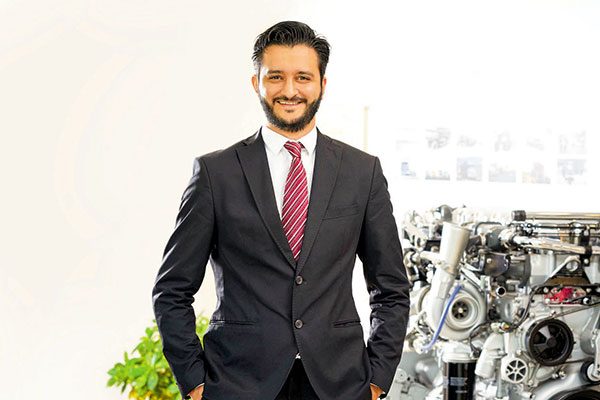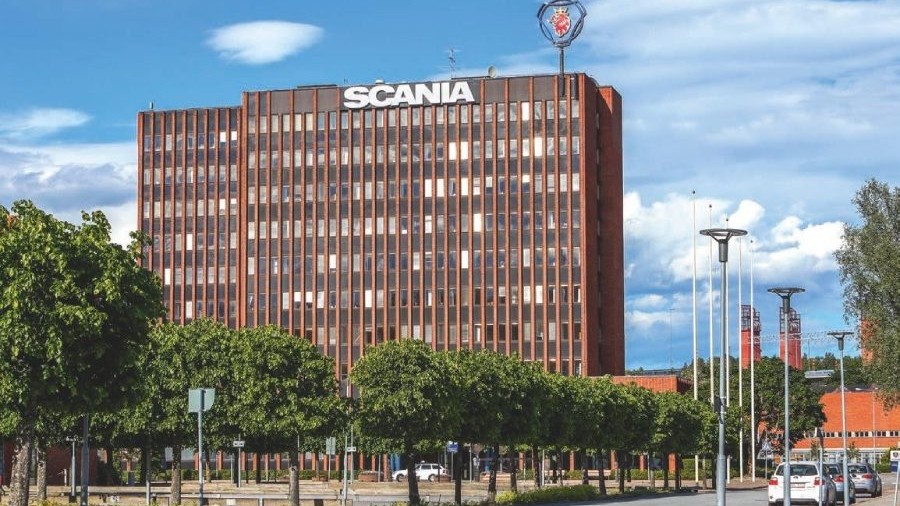
We’re all genuinely sad to see him go,” says Scania New Zealand marketing and communications manager Laura Blackburn.
“He’s a great boss; you couldn’t ask for better.”
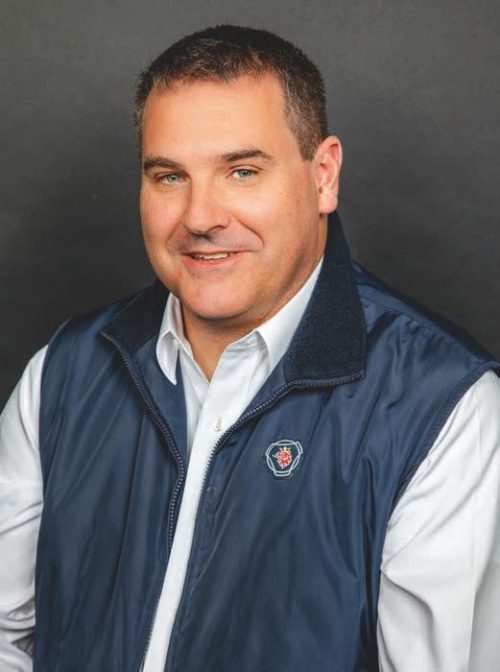
You can tell when someone’s fair dinkum, and this was no PR line – the body language told it all. Look around Scania’s Auckland HQ, and there are signs everywhere that humanity has its place in achieving serious business KPIs.
 There’s the soundproof cell for personal calls – or venting in the event the day’s not going according to plan.
There’s the soundproof cell for personal calls – or venting in the event the day’s not going according to plan.
The common room has a guitar on the wall, available for all and never left hanging for long when a social occasion is underway.
And this is no trite, symbolic effort; Lundholm is more than handy on the end of a six-stringer, having played in bands back home.
The music thing is real. “Aggh!” he says with an air of frustration. “I’ve had assignments overseas before, and when they’ve ended, I’ve been ready to leave. There’s been a sense of completion, that the job is done.
Not here, though. I’m going home for family reasons. When this Covid thing is done with, I would really like to come back.
“It’s such a great place to do business. It’s my kind of place. People here know how to get the job done but enjoy work and have a bit of fun at the same time.
You’re not always dealing with a procurement department where business is transactional. Here it’s personal; real people with amazing IP in the industry and their business. They are the ones buying the trucks. You must know your stuff if you’re going to sell trucks here.”
 Fifty-year-old Lundholm is a big Scandinavian fella with a deep voice. He’s welcoming, smiling, and appears self- depreciating, but he obviously has a serious resolve and considerable ability.
Fifty-year-old Lundholm is a big Scandinavian fella with a deep voice. He’s welcoming, smiling, and appears self- depreciating, but he obviously has a serious resolve and considerable ability.
His recent assignment history at Scania is the guy being sent in when something needs fixing, establishing, or in New Zealand’s case, both.
The ‘tough gigs’ guy in other words. Brand boffin, OEM competitor, or not, few would argue that over the past three years, Scania’s local strategy has been extensively discussed in both bars and boardrooms.
The previous wholesaler and importer was discontinued in 2018 and little old us became an outpost of the mothership itself. A thousand-odd days down the track, there appears no intention to hand it off to an appropriate suiter.
“New Zealand holds a special place for Scania. We have a long history here. It is a modern economy that can only function with trucks.
There is no real alternative. But it also has long distances and demanding hills and conditions. You come here, and you pitch your product against everyone else in real- world demanding conditions.
It’s an exciting place if you’re a manufacturer. “I became involved in the New Zealand situation a few months before I was posted here. We were getting too many calls in Sweden from customers who weren’t happy. We needed to figure out what the problem was.
 “Sales had been in a much stronger position historically and certainly weren’t where we wanted them.
“Sales had been in a much stronger position historically and certainly weren’t where we wanted them.
What we found out was it wasn’t the product – our products were good. It was support.
“We looked at the options, and the only real fix was to set up ourselves. We set goals, and there have been challenges. We’ve restructured the support network with ten captive workshops and 14 non-captive, and we’ve significantly increased the parts inventory.
Today, Scania in New Zealand has a whole new look, and we know we are on the right track, having achieved number one in sales for the over-16,000kg market earlier this year.“
Now it’s a case of planning to support the hard work already done. We are currently forecasting and putting resources in place to support our late 2022-2023 targets. What additional parts, techs, partners will we need to service what we intend to sell? With supply chain restraints around Covid, we’ve already increased our parts stock 20% over our original plan.
“We’ve done some amazing things in the past three years, and it’s just getting to the point where it’s all coming together. We can now make the most of what we’ve built, and I have to go back. Yes, there’s a frustration all right, but it’s an exciting time for whoever comes in.”
Forecasts, the future, it’s a great segue into Lundholm’s vision of trucking in terms of the century’s two big-ticket conversation topics – propulsion and navigation. Like many, he sees a mixed future for whatever propels tomorrow’s trucks.
 “I think it’ll be a mix of everything, and I’m including diesel in that, too. That might put me on the fringes, but I think diesel in the remotest, hard- to-get-to locations won’t be easy to surpass.
“I think it’ll be a mix of everything, and I’m including diesel in that, too. That might put me on the fringes, but I think diesel in the remotest, hard- to-get-to locations won’t be easy to surpass.
Unless there’s a huge leap in battery technology, pure EV with its higher weight and less payload will have limitations. What operator is happy to carry less on a heavier truck? That means hydrogen will certainly have its place also. In the end, I see a mixture.
“In terms of autonomy? Specialist applications, certainly, but a widespread global adoption of driverless vehicles for personal and commercial mobility is not something for my lifetime. We are going to need truck drivers for a long time yet.”
And so Mattias Lundholm’s work here is complete, maybe not ‘done’ as he would like, but that’s not his fault.
He’s an interesting character – humane, humble, yet uncompromising in terms of expectations – what most business references would identify as keys to good leadership. He’s certainly set an impressive stage for whoever comes next, and although the show is all theirs, something tells us he’ll maintain a keen interest in events on the other side of the globe.
Read more
People and purpose
0 Comments14 Minutes
A new normal
0 Comments9 Minutes
Faithful following
0 Comments10 Minutes
Fitting right in!
0 Comments16 Minutes


